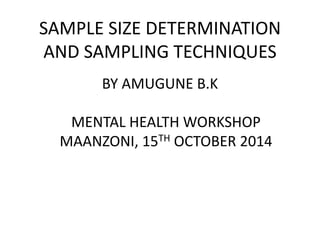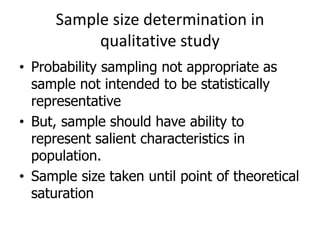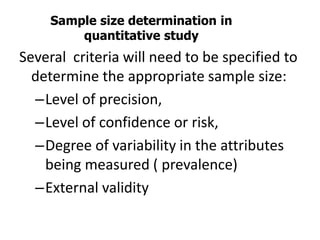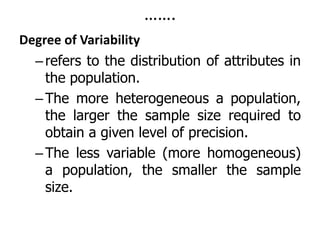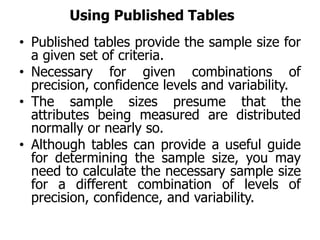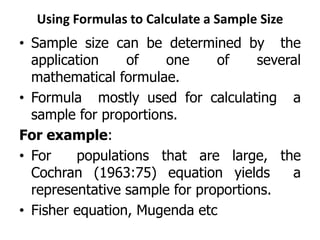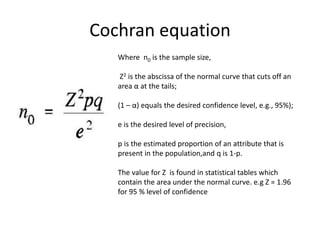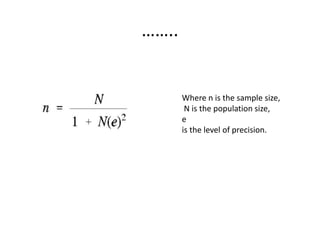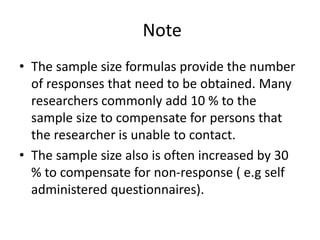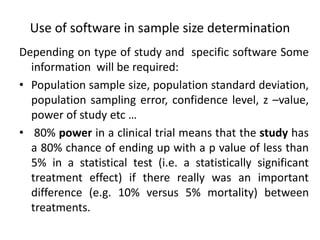The document discusses methods for determining sample sizes in qualitative and quantitative studies. For qualitative studies, the sample size is usually small and taken until theoretical saturation is reached. Judgment sampling is most common. For quantitative studies, sample size is determined based on the level of precision, confidence level, population variability, and external validity. Formulas can be used to calculate sample sizes for proportions, with corrections for finite populations. Software can also assist with determining quantitative sample sizes based on study details.
